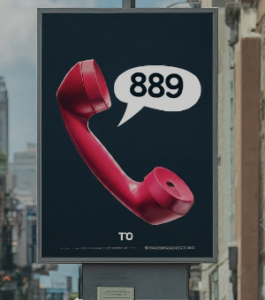Receiving a text message from an unknown or unusual number can often be confusing. When that message references a specific number like “889,” it can add another layer of uncertainty. While there isn’t a widely reported, specific scam campaign known as the “889 text message,” it’s crucial to understand the context of such messages and practice universal safety measures to protect your information.
The Likely Origin: Confusion with Section 889
Unlike common three-digit short codes used for marketing or authentication, the number “889” is most prominently associated with a significant piece of U.S. federal regulation: Section 889 of the John S. McCain National Defense Authorization Act (NDAA).
This law prohibits federal agencies from procuring or contracting with companies that use specific telecommunications and video surveillance equipment from certain Chinese companies. It is a major compliance issue for government contractors and businesses in the technology and security sectors.
Given this context, if you receive an 889 text message, it’s highly probable that it is either:
- A random, meaningless number used in a generic spam text.
- A more sophisticated phishing attempt by scammers leveraging the official-sounding “Section 889” to create a sense of authority or urgency.
Anatomy of a Potential Phishing Text

Scammers often use official-sounding topics to make their fraudulent messages seem more legitimate. A hypothetical phishing 889 text message might employ common scam tactics:
- Creating Urgency: The message might falsely claim “Your business is in violation of Section 889” or “Urgent action required to comply with 889 regulations.”
- Providing Malicious Links: The text will almost certainly contain a link, urging you to click it to “verify your details,” “avoid penalties,” or “learn more.” These links lead to fraudulent websites designed to steal login credentials, personal information, or financial data.
- Requesting Information: The message might directly ask you to reply with personal or business information, which should never be shared via an unsolicited text.
How to Safely Handle an Unsolicited 889 Text Message
If you receive an unexpected 889 text message, or any suspicious message, do not let curiosity compromise your security. Follow these essential steps:
- Do Not Click the Link: This is the most important rule. Clicking on unknown links is the primary way scammers succeed.
- Do Not Reply: Replying to a spam text—even with “STOP”—confirms to the sender that your number is active. This can lead to you receiving even more spam and scam messages.
- Block the Number: Immediately use your phone’s built-in feature to block the sender. This will prevent them from contacting you again from that specific number.
- Report the Message: You can report the message as “Junk” or “Spam” directly within your messaging app. You can also forward the entire message to the number 7726 (which spells SPAM). This sends the report to your mobile carrier, helping them track and block fraudulent senders.
- Delete the Text: Once you have taken the above steps, simply delete the message from your device.
In conclusion, while a specific “889 text message” campaign is not a documented, widespread threat, the number’s association with a major federal regulation makes it a prime candidate for use in phishing scams. By treating all unsolicited messages with caution and adhering to strict security practices, you can effectively protect yourself from fraud.

